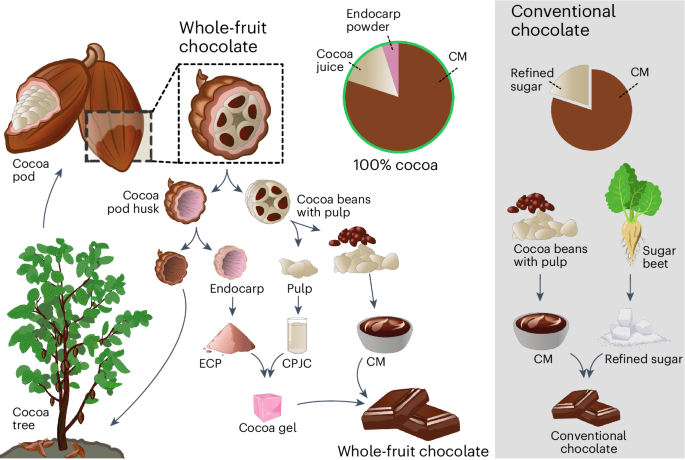This innovative approach not only makes chocolate more nutritious, but also reduces the environmental impact of chocolate production.
The new recipe, recently published in the journal Nature Food, uses the pulp and shell of the cocoa pod, rather than just the beans, to create a sweet gel. This gel can replace the sugar normally used in chocolate, giving rise to a healthier and more sustainable product.
“The cocoa fruit is basically a pumpkin and at the moment we're only using the seeds,” explained Kim Mishra, lead author of the study, quoted by the British newspaper The Guardian. “But there are many other wonderful things about it.”


Traditionally, the introduction of moisture into chocolate is avoided as it can ruin its texture. However, researchers have successfully incorporated the residues of the pulp and juice of the cocoa fruit into a gel that maintains the integrity of the chocolate. This gel not only adds sweetness but also includes the nutritional benefits of the whole cocoa fruit.
The study showed that this method uses 6% less land and water than conventional chocolate production. However, it initially increased greenhouse gas emissions by 12% due to the energy-intensive drying process.
The researchers propose that scaling up the process and using solar energy for drying could mitigate these emissions.
The method could significantly benefit farmers in tropical countries, who often receive only a small fraction of the chocolate industry's profits.
Chocolate is one of the most polluting foods due to its high greenhouse gas emissions. By reducing waste in the production process, Mishra and his team wanted to create a more sustainable product.
“The sweetness of the gel is comparable, but you don't achieve exactly the same level,” said Mishra. “Making this chocolate is all about balance - if you add too much sweetening gel, the chocolate isn't processable; if you add too little, the chocolate isn't sweet enough.”
Despite these challenges, the chocolate produced in the laboratory had an almost identical texture to traditional dark chocolate and a flavor profile similar to that of high-quality dark chocolates from South America. The new chocolate releases its sweetness more slowly in the mouth and has additional fruity notes and acidity from the cocoa juice.






